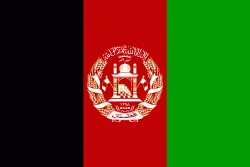Sar-e Pol city (Sar-e Pul)
Sar-e Pol or Sari Pul is the capital city of the province of Sar-e Pol Province in northern Afghanistan. It is in Sari Pul District. Sar-e Pol elevation is 2,155 ft (657 m).
In 2015, it had an official population of 51,075. in 2018 the population was 164,600. There were 5,675 total number of dwellings in a total land area of 2,990 hectares. The city's distance from Kabul is 349 km. Its population is mostly Tajiks and Uzbeks.
The Taliban overran and captured the city on the 8th August 2021 as part of their 2021 offensive.
In 2015, it had an official population of 51,075. in 2018 the population was 164,600. There were 5,675 total number of dwellings in a total land area of 2,990 hectares. The city's distance from Kabul is 349 km. Its population is mostly Tajiks and Uzbeks.
The Taliban overran and captured the city on the 8th August 2021 as part of their 2021 offensive.
Map - Sar-e Pol city (Sar-e Pul)
Map
Country - Afghanistan
 |
 |
| Flag of Afghanistan | |
Human habitation in Afghanistan dates back to the Middle Paleolithic era, and the country's strategic location along the historic Silk Road has led it to being described, picturesquely, as the ‘roundabout of the ancient world’. Popularly referred to as the graveyard of empires, the land has historically been home to various peoples and has witnessed numerous military campaigns, including those by the Persians, Alexander the Great, the Maurya Empire, Arab Muslims, the Mongols, the British, the Soviet Union, and most recently by a US-led coalition. Afghanistan also served as the source from which the Greco-Bactrians and the Mughals, amongst others, rose to form major empires. The various conquests and periods in both the Iranian and Indian cultural spheres made the area a center for Zoroastrianism, Buddhism, Hinduism, and later Islam throughout history.
Currency / Language
| ISO | Currency | Symbol | Significant figures |
|---|---|---|---|
| AFN | Afghan afghani | Ø‹ | 2 |
| ISO | Language |
|---|---|
| PS | Pashto language |
| FA | Persian language |
| TK | Turkmen language |
| UZ | Uzbek language |















